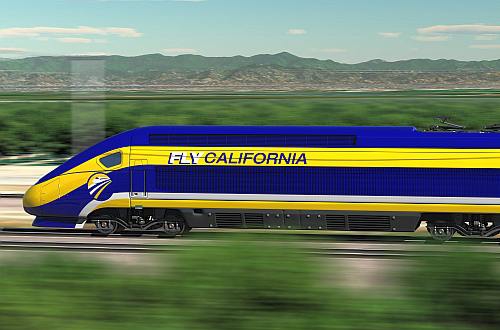
July 13, 2020
High Speed Rail Endangers Wildlife, Impacts Farmland in Coyote Valley
Last month, we called on the California High Speed Rail Authority for better protections of wildlife connections through Coyote Valley and to ensure that farmland loss there be balanced with farmland protection within the same area.
Our comments were in response to the Authority’s San Jose to Merced Project Section Draft Environmental Impact Report released in April. Our analysis of the draft report – done in conjunction with independent biologists and other experts – determined that the environmental review was inadequate and came to erroneous conclusions that leaves wildlife unprotected in Coyote Valley.
Viability of Wildlife Connectivity Measures Questionable
While the draft report proposes crossings like creek bridges to help wildlife cross the rail line in Coyote Valley, it doesn’t provide enough specificity to determine whether the crossings will work. For example, rail line fencing might not guide animals to the few safe crossings. Furthermore, it could interfere with already-planned wildlife crossings at Metcalf Canyon Road and Bailey Avenue.
Some wildlife face severe threats to their survival due to habitat loss from increased development and barriers to migration. It is critical that we maintain wildlife habitat and, where possible, enhance wildlife movement so that animals can thrive and not just manage to survive.
Loss of Farmland Needs to be Recognized, Mitigated in Coyote Valley
Coyote Valley, located within the County’s Agricultural Resource Area, has over 4,000 acres of farmland that are a crucial part of our local food system. While the Authority’s currently preferred rail alignment would not consume farmland in Coyote Valley (Alternative 4, running on the existing railroad right of way), the other proposed alternatives would. And in the case of the other three alternatives, the draft report fails to acknowledge the loss of farmland from running the train through Coyote Valley. In other parts of the County where the report does acknowledge the loss of farmland, and also acknowledges the need to partly mitigate that loss by preserving other farmland, it gives only a vague statement about preserving the land in the same “region”.
While no farmland should be lost in Coyote Valley due to the new rail line, any farming impacts in Coyote Valley should be balanced with protecting farmland there, not in a far-off corner of the County that is unlikely to ever be threatened with development.
Making these changes are necessary as part of a plan to permanently protect these lands for the long-term climate resiliency and health of our region and to mitigate the negative impacts from farmland loss.
We’re Fighting For Better Protections and a Better Environmental Analysis
While high-speed rail is meant to reduce greenhouse gas emissions from air travel, its construction and operation can have significant on-the-ground impacts. Since the passage of Prop 1A by voters that enabled the planning and construction of this state project, we have focused on minimizing the potential impacts of high-speed rail on our local natural landscapes and wildlife. Now it is up to the Authority to remedy those impacts and work with other stakeholders to ensure the protection of wildlife and potentially build them an overcrossing at Bailey Avenue.
